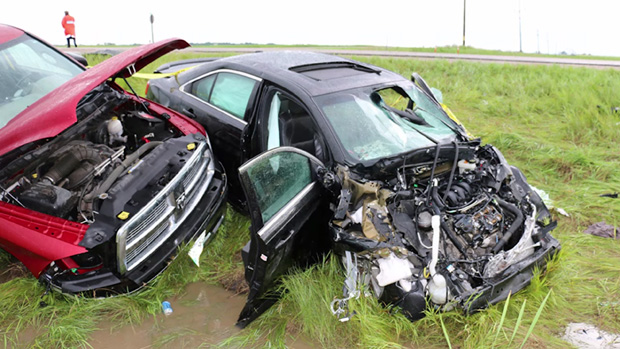November 15 is a sombre day for thousands of Canadians who have tragically lost loved ones to road collisions. The National Day of Remembrance for road crash victims is spearheaded by the Canadian Council of Motor Transport Administrators and supported by Manitoba Public Insurance. It is a day set aside each year to remember those who have been killed in motor vehicle collisions – collisions that far too often could have been prevented.
Last year in Manitoba, 107 people were killed in motor vehicle crashes on public roadways – the deadliest year on Manitoba roads in the past five years. While 2017 is proving to be a safer year for fatalities, 67 people have still been killed in road-related crashes so far. With prevention in mind, the Province recently released the Manitoba Road Safety Plan: Road to Zero 2017-2020. The new plan lays out the key priorities to be addressed and creates a framework for road safety stakeholders to work together on holistic approaches and lasting solutions.
“The vision of the road safety plan is for Manitoba to have the safest roads in Canada and we are committed to one day achieving zero traffic fatalities on our roadways,” Minister of Crown Services Cliff Cullen said. “Prevention and reduction of road losses will be achieved by focusing on strategies aimed at road users, the vehicles they drive, the roads they drive on, and enforcement of traffic laws. Everyone has a part to play in achieving our vision of having the safest roads in Canada and zero road fatalities.”
Manitoba Public Insurance and its road safety partners are committed to raising awareness about the dangers of high-risk driving behaviours.
“The ripple effect of a death is far reaching and lasting,” Ward Keith, vice-president, Business Development & Communications and CAO, Manitoba Public Insurance, said. “The National Day of Remembrance serves as a reminder about those who have been killed in motor vehicle crashes and the loved ones they have left behind. It also gives us the opportunity to think about the consequences of our own actions when behind the steering wheel. Far too often, collisions occur because of poor choices and high-risk driving behaviours, including driving while impaired by drugs or alcohol, speeding, driving too fast for conditions, driving while distracted, and non-use of seatbelts.”
Police agencies in Manitoba must also deal with the consequences of high-risk driving behaviour.
“Deaths from motor vehicle collisions are almost entirely preventable, yet too many Manitobans die this way every year,” said Insp. Gord Spado, of the Winnipeg Police Service’s Central Traffic Division. “The Winnipeg Police Service shares the goal of eliminating traffic fatalities on Manitoba roadways. To do this, there needs to be education and enforcement to change driver behaviour. The police service is committed to doing our part.”
“There is no easy way to tell someone their loved one isn’t coming home, but we have had to do it far too many times this year,” said Insp. Ed Moreland, Officer in Charge of Traffic Services for the RCMP in Manitoba. “Simple decisions, such as slowing down, driving sober, buckling up and paying attention can have life-saving consequences.”
Quick Facts:
- Each year in Manitoba about 28 people are killed as a result of distracted driving.
- A person is 35 times more likely to be killed and five times more likely to be seriously injured when not wearing a seatbelt.
- On average (2012 to 2016), there are 25 people killed in impaired driving collisions each year on public roads in Manitoba.
- In 2016, four bicyclists, three motorcyclists and 13 pedestrians – our most vulnerable road users – lost their lives in motor vehicle-related collisions on public roadways.




